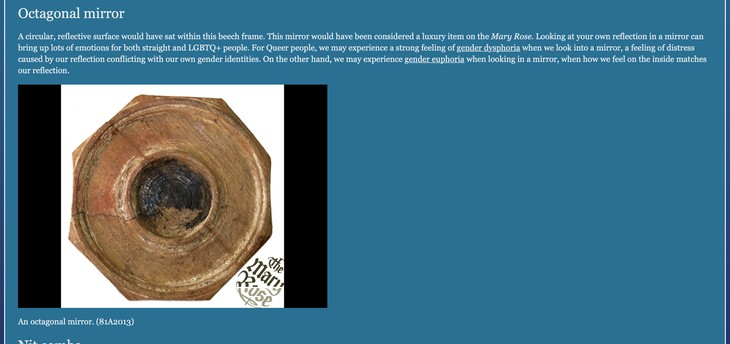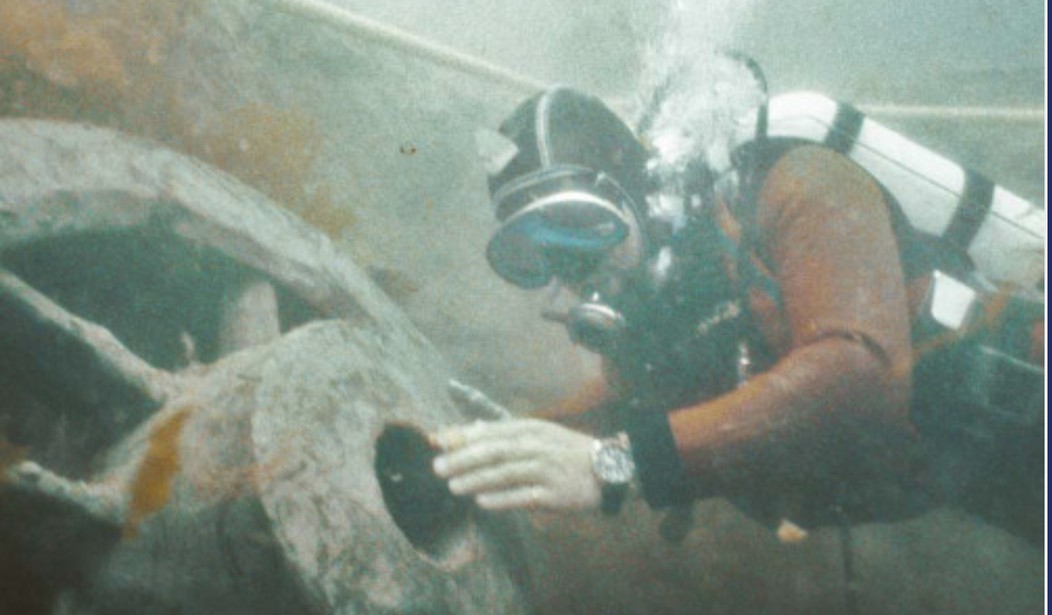There is a museum in Portsmouth, England that boasts it has the “largest collection of Tudor objects in the world.”
The Tudors, as you likely know, were a line of British monarchs that reigned for 118 years, and most famously included Henry VIII, the corpulent and bloodthirsty king who terrorized Britain throughout his reign.
Can you tell I am not a fan?
One of King Henry’s first decisions as king was to create a standing Navy, changing the British policy of relying on requisitioned merchant ships during wars to a more rational policy of having purpose-built ships made for war. It was one of his brighter moves.
One of the first ships commissioned was famously his favorite, the Mary Rose. Towards the end of his reign the ship sunk during a battle, taking down about 500 sailors with it. The ship was found, excavated, and eventually raised in 1982, and now is the centerpiece of a museum. And because the ship went down with all the men and the material they brought with them, it became a historical treasure trove.
And, thank God, it has now been reinterpreted in light of Queer theory, thanks to the museum. And, it turns out, that Queering history is now a “movement” with museums large and small around the world reinterpreting their collections in light of Queer theory. It is called “Queering the Collections.”
Nice. Just what everybody needed.
What was striking to me about the particular interpretation found on the Mary Rose Museum’s website was just how stupid and useless it was. Rather than being offensive in any way, it was solipsistic. In this case, at least, we are invited to learn literally nothing about life under the Tudors and instead are lectured about how Queer people today live and see themselves.
Unfortunately but unsurprisingly we learn that being Queer means being fragile.
For instance:

Octagonal mirror
A circular, reflective surface would have sat within this beech frame. This mirror would have been considered a luxury item on the Mary Rose. Looking at your own reflection in a mirror can bring up lots of emotions for both straight and LGBTQ+ people. For Queer people, we may experience a strong feeling of gender dysphoria when we look into a mirror, a feeling of distress caused by our reflection conflicting with our own gender identities. On the other hand, we may experience gender euphoria when looking in a mirror, when how we feel on the inside matches our reflection.
Well that is useful, isn’t it? I learned that Queer people have emotional lability–something blindingly obvious that should be addressed by counseling–and pretty much nothing else. If people can have mood swings caused by seeing their own reflection something is deeply wrong and they need help, and it won’t come from a museum of Tudor artifacts.
Obviously, if this were only one museum–even a large one much visited in England–it wouldn’t be that big a deal.
Unfortunately, it isn’t. This ideological movement has swept into some of the biggest collections in the world, and the results aren’t pretty. I wrote late last year about how the Wellcome Trust has been attacking its founder and hiding artifacts from his collection of medical equipment from around the world.
Now we have this: Queering history.
Queering the Collections
In March 2015 IHLIA, a Dutch organization for collecting and preserving LGBT heritage, organized together with the Reinwardt Academy, The Amsterdam Museum and COMCOL, a symposium called ‘Queering the Collections’.
Building on similar efforts in the UK and USA, this Netherlands-based project unites people working in museums, archives, libraries, galleries, community organizations, and universities, in a joint effort to collect material culture and oral histories documenting queer life past and present, and to present these collections in partnerships with the public.
You can download the program (in English) of the symposium here. The report (in Dutch including keynote speech Richard Parkinson of the British Museum in English) can be downloaded here.
The project also resulted this year in the integration of cultural activities in the program on queer history during Amsterdam Pride and Europride 2016.
QTC will continue as an ongoing networkgroup focused on the importance of preserving and presenting queer history and culture.
This is a form of vandalism. Until very recently there was no such thing as “Queer,” at least as we think of it today. There were gays and lesbians. There were oddballs, crossdressers, and perverts.
But no “Queer” culture. I feel confident that buggery took place on the Mary Rose, for instance, but also that nobody thought of themselves or could conceive of themselves as “Queer.” If they met a modern “Queer” person on the docks, my guess is that the encounter wouldn’t go well for that person.
Just guessing.
Alphabet ideologists keep asking why we care about these issues, and I can safely answer “I wouldn’t, but you keep invading Western culture and destroying it.” I don’t spend time worrying about people who deface their bodies, practice bizarre sexuality, or want to pretend they are dragons or dogs. If it doesn’t affect me or mine, have at it.
But this invasion into the larger culture, the rewriting of history, the recruiting of children, and the desire to destroy the larger culture in which we live is repulsive and unacceptable.
You do your thing but stay away from ours. And the time of the Tudors was not Queer, and other people’s kids are not yours to pervert.
Assuming that something resembling Queer can be found in history, point it out, and if you like celebrate it.
But Queerness is not to be found in a mirror on a ship built by Henry VIII.








Join the conversation as a VIP Member